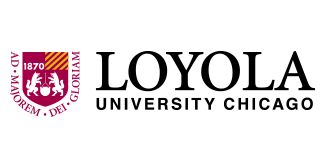Major
Biology
Anticipated Graduation Year
2022
Access Type
Open Access
Abstract
Our research group is interested in furthering our investigation and elucidating the expression of the Zebrafish's col2a1b Type II collagen gene, an ortholog of the human COL2A1 Type II collagen gene. We utilize the process of in situ hybridization to isolate, identify, and characterize the nature of col2a1b expression in developing Zebrafish. Our study chronologically traces the development and manifestation of this cartilage gene during various stages of embryogenesis, which we use to further our understanding of cellular and genetic processes that regulate growth and establishment of col2a1b collagen. Our study is also interested in the evolutionary history and maintenance of this gene, and we seek to understand its developmental pattern, along with its physiological role, within vertebrates, such as our organism of study, Zebrafish. Phylogenetically, we know that during some time in our evolutionary history, humans lost the secondary orthologue of this gene, which generates questions as to the potential reasons for this loss of genetic material, as well as the maintenance of it within our organism of study. By investigating the evolutionary origins of the col2a1a and col2a1b homologues, we can presume the necessity, and thus continuity, of the two as separate genes.
Faculty Mentors & Instructors
Dr. Rodney M. Dale
Creative Commons License

This work is licensed under a Creative Commons Attribution-Noncommercial-No Derivative Works 3.0 License.
Expression of mRNA of the col2a1b gene during Zebrafish Embryogenesis
Our research group is interested in furthering our investigation and elucidating the expression of the Zebrafish's col2a1b Type II collagen gene, an ortholog of the human COL2A1 Type II collagen gene. We utilize the process of in situ hybridization to isolate, identify, and characterize the nature of col2a1b expression in developing Zebrafish. Our study chronologically traces the development and manifestation of this cartilage gene during various stages of embryogenesis, which we use to further our understanding of cellular and genetic processes that regulate growth and establishment of col2a1b collagen. Our study is also interested in the evolutionary history and maintenance of this gene, and we seek to understand its developmental pattern, along with its physiological role, within vertebrates, such as our organism of study, Zebrafish. Phylogenetically, we know that during some time in our evolutionary history, humans lost the secondary orthologue of this gene, which generates questions as to the potential reasons for this loss of genetic material, as well as the maintenance of it within our organism of study. By investigating the evolutionary origins of the col2a1a and col2a1b homologues, we can presume the necessity, and thus continuity, of the two as separate genes.



Comments
This project proves to be very valuable and applicational in the realm of research and medicine for a plethora of reasons. To preface, collagen has relevance and importance due to its relative abundance and commonality within the extracellular matrix of Metazoans, which illustrates the biological necessity of this protein across all mammals and vertebrates. Additionally, the model organism being studied, Zebrafish, proves to be an excellent focus for our study because it possesses an optically transparent body (which aids in our ability to track development, expression, and growth), as well as a highly distinct expression pattern and regulatory element that facilitates our ability to study and trace the cellular development of cartilage/collagen within multiple tissue sets of this organism. Zebrafish possess optimum qualitative characteristics that can drive and enhance the study of embryogenesis, skeletogenesis, and development. Transitioning back to the benefits research on this topic can introduce, by gaining knowledge on the process and genetic purpose, we can embrace a deeper and more inclusive understanding of this gene, which can potentially make strides in the clinical realm as well. Further on, col2a1b has distinctions that separate it from its presumed homolog, col2a1a. It has different expression patterns and there is reason to hypothesize that col2a1b may necessitate the bone morphogenetic protein (BMP) signaling gradient, which is crucial for proper vertebrate embryogenesis. By furthering our understanding of cellular processes, BMP signaling pathway, and the protein product(s), we can obtain invaluable understanding of the process and factors involved in proper vertebrate development (across multiple species).